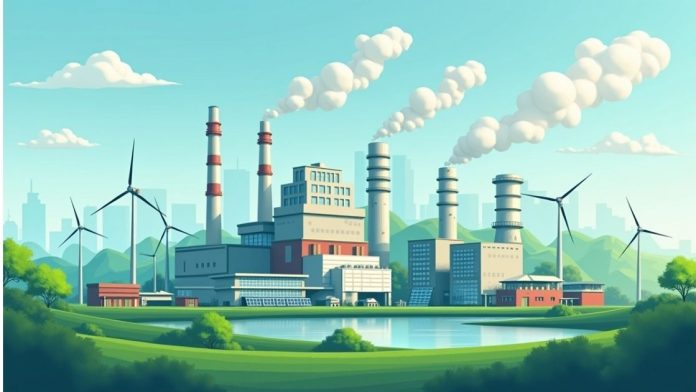Think about this: every puff of smoke rising from a factory chimney isn’t just steam—it’s a signal. A signal that says, “We can do better.”
For decades, industrial growth has powered our cities, created jobs, and fueled innovation. But it’s also come at a steep cost: polluted air, changing climates, and communities gasping for cleaner skies. Now, with rising awareness and evolving technology, we’re at a tipping point—where industry and sustainability don’t have to be enemies.
Welcome to the world of industrial emission control—where clean air meets smart engineering.
Why Industrial Emissions Are Everyone’s Problem
Let’s not sugarcoat it: industrial pollution is one of the largest contributors to environmental degradation. Heavy industries like steel, cement, oil, and chemical production release:
-
Particulate matter (PM2.5, PM10) – Tiny particles that penetrate deep into our lungs.
-
Greenhouse gases (GHGs) – CO₂, methane, and nitrous oxide that trap heat in the atmosphere.
-
Sulfur dioxide (SO₂) and Nitrogen oxides (NOx) – Responsible for acid rain and respiratory issues.
-
Volatile organic compounds (VOCs) – Harmful chemicals that form ground-level ozone.
These emissions don’t just hurt the planet. They affect us directly—causing asthma, cancer, cardiovascular disease, and even premature death.
But here’s the silver lining: we can control industrial emissions—without sacrificing productivity.
What Is Industrial Emission Control?
Industrial emission control refers to strategies, technologies, and policies aimed at reducing harmful pollutants released during manufacturing, energy production, and other industrial processes.
This includes:
-
Capturing pollutants before they enter the air
-
Filtering or converting emissions into less harmful substances
-
Changing processes to be cleaner and more efficient
It’s not just good science—it’s good business.
Key Technologies Used in Emission Control
1. Electrostatic Precipitators (ESPs)
These devices use electric charges to remove dust particles from exhaust gases. Widely used in power plants and steel mills.
2. Baghouse Filters
Think of a giant vacuum cleaner bag. These capture fine particles from industrial smoke before it’s released.
3. Scrubbers
Wet or dry systems that wash out acidic gases like SO₂ and NOx before they hit the atmosphere.
4. Catalytic Converters
Used in both vehicles and industries, these convert toxic gases into safer compounds.
5. Carbon Capture and Storage (CCS)
Captures CO₂ emissions and stores them underground or reuses them—a high-tech tool for reducing greenhouse gases.
Real-World Examples of Emission Control in Action
-
Germany’s Steel Industry: Has cut emissions by 25% over the last decade through cleaner technologies and carbon pricing.
-
Sweden’s Cement Plants: Using biomass and CCS to slash emissions dramatically.
-
China: Though once notorious for smog, it’s now leading in scrubber and ESP technology adoption across its power sector.
These aren’t just feel-good stories—they’re proof that change is possible when intention meets innovation.
✅ Actionable Tips: What You Can Do to Support Industrial Emission Control
While it may seem like a problem for governments and corporations, you play a vital role too. Here’s how:
1. Support Eco-Conscious Brands
Buy from companies that prioritize green manufacturing and publish sustainability reports.
2. Push for Transparency
Demand that local industries and city councils disclose emission data. Awareness drives accountability.
3. Back Strong Environmental Policies
Vote for leaders who back clean energy, enforce pollution controls, and invest in industrial innovation.
4. Reduce Personal Demand
Lowering your consumption of energy, steel, cement, and plastics reduces the need for industrial output.
5. Educate Your Network
Talk about industrial pollution. Share what you learn. Change starts with conversation.
Addressing the Elephant in the Room: Is Emission Control Too Expensive?
One common myth is that pollution control hurts profits. But here’s the truth: cleaner industries are more resilient. They:
-
Avoid regulatory fines
-
Save on energy and material costs
-
Earn consumer trust
-
Attract sustainable investment
The long-term gains far outweigh the initial costs.
Frequently Asked Questions (FAQs)
1. What are the biggest polluting industries today?
Energy, cement, steel, chemical production, and transportation industries are among the top emitters.
2. Can small factories also control emissions?
Absolutely. Many affordable, scalable technologies exist for small and medium enterprises.
3. Are emission limits enforced globally?
Not uniformly. Countries like Germany, Japan, and the U.S. have strict standards, while enforcement is weaker in some developing nations.
4. What’s the role of AI in emission control?
AI helps optimize processes, predict emissions, and improve monitoring—making controls smarter and more efficient.
5. Are emissions only a problem outdoors?
No—industrial emissions can affect indoor air quality in factories and nearby communities too.
Conclusion
Industrial progress doesn’t have to come at the expense of clean air. We have the knowledge. We have the technology. Now, we need collective willpower.
Industries that control their emissions aren’t just reducing their environmental footprint—they’re building trust, driving innovation, and leading the way to a sustainable future.
And you, as a conscious citizen, consumer, or entrepreneur, have the power to fuel this shift.
Do you work in or live near an industry taking steps to cut emissions?
Have you seen firsthand how cleaner practices make a difference?
What’s your personal strategy for managing time while staying eco-conscious?
💬 Drop your thoughts in the comments below. Let’s create a community of action, one clean breath at a time.

